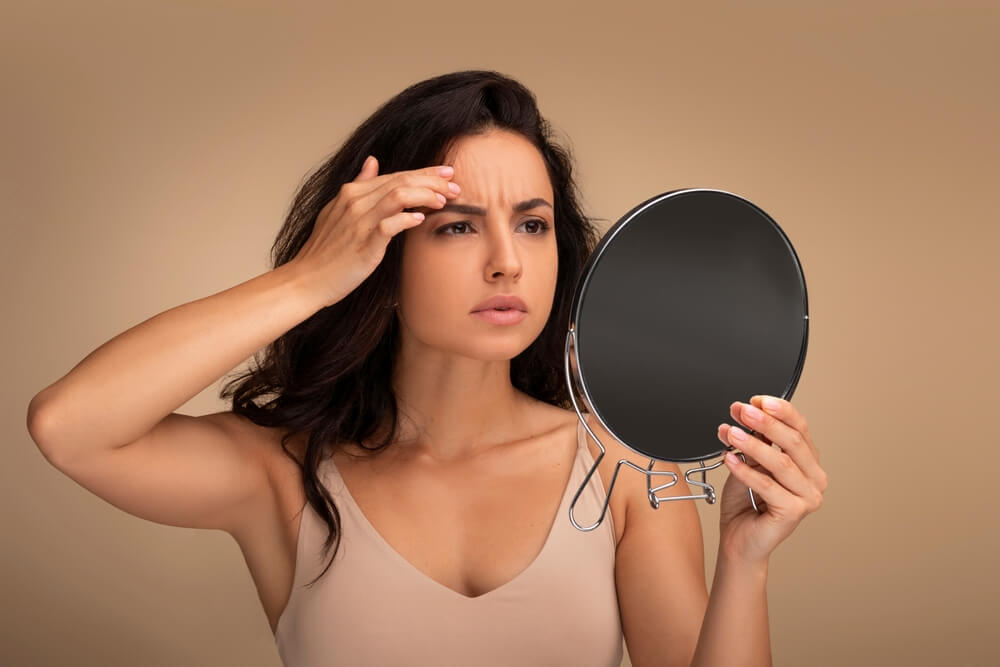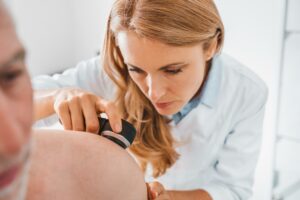We’ve all heard so many stories about Vitamin D. If you live in a sunny climate you’re getting enough OR you can’t get enough so you have to take supplements OR just eat a healthy diet and you’re covered.
What’s the real story? Let’s start at the beginning.
“We all need Vitamin D,” says Dr. Jennifer Hermann of Moy Fincher Chipps, a Golden State Dermatology Affiliate. “Even though myths and untruths abound, all medical professionals agree that it’s necessary. It helps your body absorb calcium from food to strengthen bones. It also helps your muscles, nerves, and immune system and observational studies suggest that it may be helpful for cancer prevention.”
You can get Vitamin D in three ways: food, supplements, and the sun.
- It comes in two main kinds: D2 and D3.
- As with many vitamins, you can get too much or not enough. If you don’t get enough, adults can develop soft bones or experience bone loss. Children can develop rickets.
- If you get too much, you might experience nausea and vomiting, weakness, confusion, pain, excessive urination and thirst, and kidney stones. Extremely high levels can cause kidney failure, irregular heartbeat, and even death, according to the National Institutes of Health.
- How much do you need? According to the Mayo Clinic, the recommended daily amount is 400 international units (IU) for babies until they turn 1; 600 IU for ages 1 to 70; 800 IU for people older than 70.
Safe and Unsafe Sources
Now that we know how much to get, what’s the best way to get it? Let’s start with food.
Vitamin D naturally occurs in foods including salmon, tuna, mackerel, beef liver, and egg yolks. Some of those foods might not be on your weekly grocery list, but even if they were, most of us don’t eat enough of these foods to get sufficient vitamin D. (That’s why, since the 1930s, certain US food manufacturers have added it to milk, cereal, and orange juice.)
The difficulty in getting enough through food naturally leads to supplements. Are these a safe source? Like anything we eat or drink, the answer is – it depends. With any supplement, read the label carefully, consider other medications you’re on or health conditions you have. It’s always a good idea to ask your doctor if you have questions, as well as to do some research on different brands. It’s good to know before you buy.
Some believe a benefit of tanning beds is Vitamin D production. The tanning industry actually markets this! The problem is that tanning beds emit UVA rays, whereas it is UVB that helps the skin produce Vitamin D. So, tanning simply increases skin damage and skin cancer risk, without adding any Vitamin D benefit.
True Facts: Vitamin D and the Sun
Last but not least, a source of Vitamin D is the sun. When exposed to ultraviolet radiation (directly, not through windows), your body actually manufactures this vitamin. That sounds appealing, doesn’t it? A natural process your body can execute on its own.
And unlike the risk of getting too much from supplements, your body won’t produce too much on its own. But how do you gauge how much is enough? What if it’s cloudy, or you live in an area with high levels of air pollution that block the sun’s rays? How many minutes a day would you need? How well does your skin make Vitamin D versus other people’s if skin color is different? And what about the risk of skin cancer?
Cancer overall is the second-leading cause of death in the U.S. Of all the forms of cancer, skin cancer is more common than all other cancers combined. Most are easily treated if caught early, but skin cancer can be deadly, if it spreads. The good news is that because skin cancer is external, we have a higher chance of noticing it and treating it.
Before you start trying to calculate how to get enough vitamin D from the sun, know that the American Academy of Dermatology does not recommend sun as a source for Vitamin D. With no “ifs” or “in the case of” caveats, they say: “There is not a safe level of UV exposure from the sun or indoor tanning devices that allows for maximum vitamin D synthesis without increasing skin cancer risk.”
Less concerning but still an issue is the general damage sun can do to your skin. As we shared in an article about how to prevent and treat sun-damaged skin, in a series of photos showing side-by-side comparisons from the American Academy of Dermatology, the only person who doesn’t have sun damage is the 18-month-old. Even the four-year-old has the beginnings of some harm.
The technical term for the aging effects of the sun is photoaging. Photoaging is premature aging of the skin caused by ultraviolet A (UVA) and ultraviolet B (UVB) radiation. The radiation can be natural (from the sun) or artificial (radiation from tanning beds or tanning lamps). No matter the source, it’s something we can avoid.
Bottom Line for Better Health
The bottom line is yes, we all need Vitamin D. Take a look at what you eat and drink, and then consider a supplement if you feel you’re not getting enough. Talk to your primary care physician or your dermatologist if you have questions.
“But definitely don’t try to get Vitamin D from the sun,” says Dr. Herrmann. “The risk of sun damage and skin cancer is far greater than any benefit you might get.”







